Purdue Physicists share in $200M Department of Energy Award to upgrade CERN’s CMS detector
2024-03-08
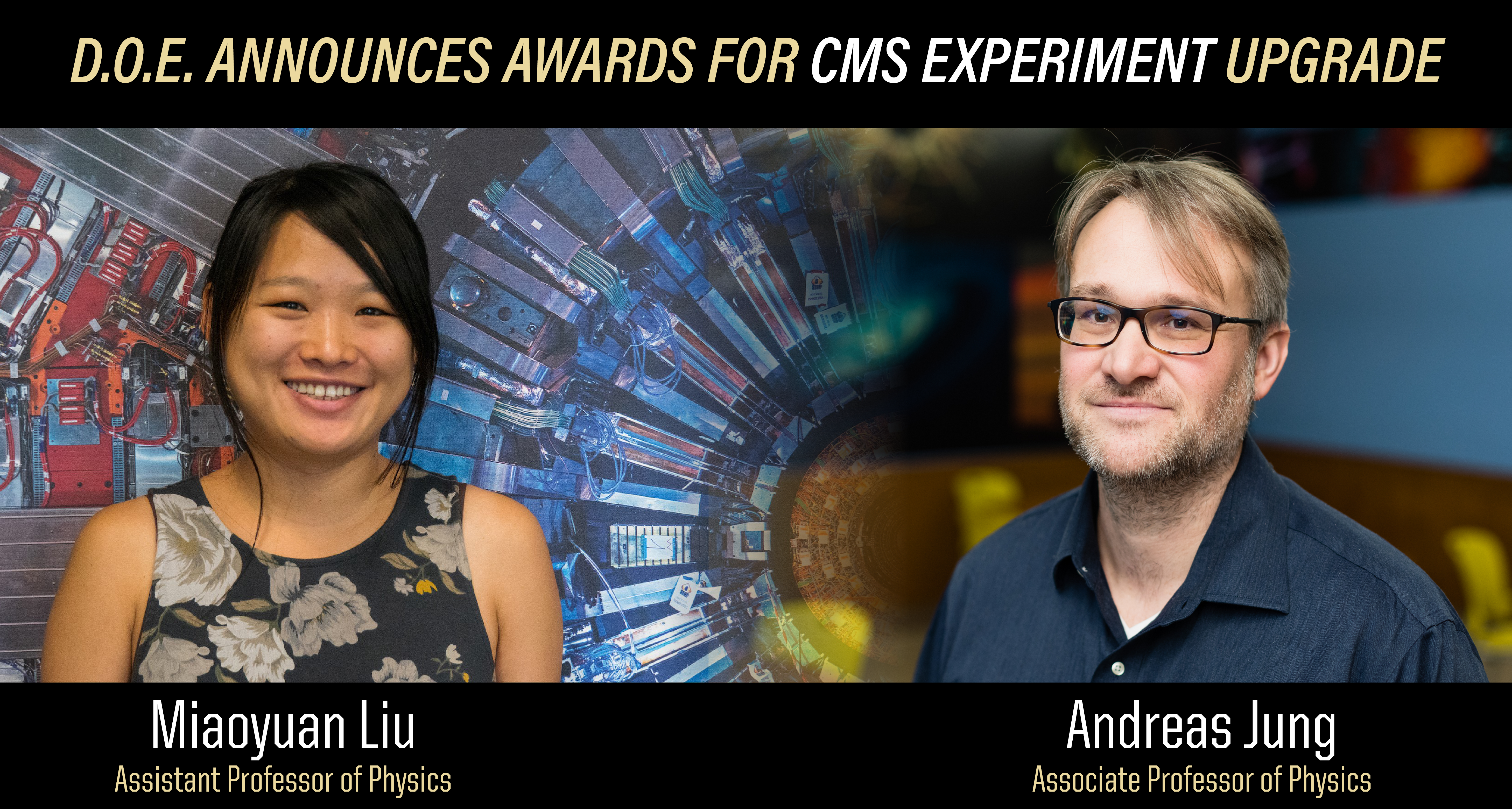
The Compact Muon Solenoid (CMS) detector sits at a key position inside the heart of CERN’s Large Hadron Collider. Every 25 nano seconds it takes high speed “photographs” of the forced collisions prompted by physicists around the world. In the future the “camera” will be upgraded to provide unprecedented granularity, more than 1 billion pixels will “see” the collisions at the LHC and up to 40 million times per second. The enormous number of particles corresponds to a harsh radiation environment. The major upgrade of the CMS detector is not only funded by the United States but by many countries of the world that all share a common interest on what is learned at CERN.
In February of 2024, the U.S. Department of Energy (DOE) formally approved $200 million to the CMS experiment upgrade. According to Fermilab, the upgrade will increase the collision rate by a factor of five, giving scientists a massive dataset to look for new particles and study rare subatomic processes. To keep up with the more intense particle beams and unprecedently harsh radiation environment in the innermost detector region, the CMS experiment needs a massive overhaul.
Two professors from Purdue University’s Department of Physics and Astronomy will receive funding from this DOE grant, totally over $600,000. PI Andreas Jung, associate professor, and Miaoyuan Liu, assistant professor, will lead research teams that will push mechanical and electronics detector projects forward at the Purdue West Lafayette campus.
Liu’s team will include post-doctoral research associate Jan-Frederik Schulte. Their work begins 2024 and will conclude in 2026. They will conduct research on the with the electronics/sensors of the CMS detector. Their work will be conducted in the clean room facilities at the Purdue Silicon Detector Laboratory (PSDL).
“The components we are testing are crucial for providing information of charged particle tracks to our real time data processing and triggering,” says Liu. “Without this capability, we would lose a big fraction of interesting physics to be filtered out of the High luminosity LHC proton-proton collisions. For example, we would lose our precious Higgs boson pairs that will reveal nature's secrets on electroweak symmetry breaking, which occurred in the very early universe.”
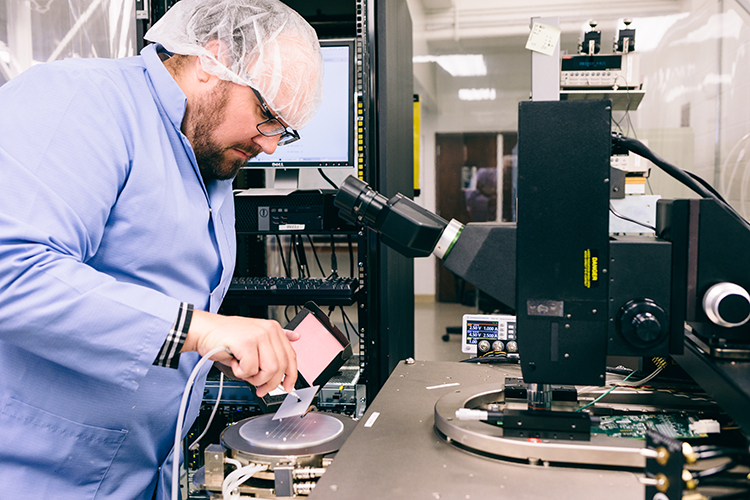
Above, Jan-Frederik Schulte tests a silicon sensor in the clean room facilities at the Purdue Silicon Detector Laboratory (PSDL). Photo by Brian Powell. Below, is an example of the silicon sensor. Image provided by Miaoyuan Liu.
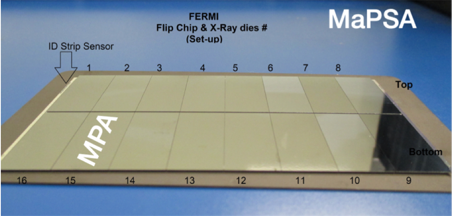
“The approved DOE project will fund testing of a third of the Macro-Pixel-Strip-Assembly (MaPSA) silicon detector modules during pre-production and production from 2024 to 2026,” explains Jung. “Both Mechanics and Electronics project activities at the Purdue labs allowed to train numerous Purdue students and summer interns. These students join via training programs such as the REU and conduct research in the labs on electrical testing and calibrations of semiconductor devices.”
Jung’s team includes Lead Research Engineer Ben Denos, Graduate Research Assistant Sushrut Karmarkar, and Archie Sulaiman, which will be working on support mechanics of the CMS detector. Their work will be conducted at the Composite Manufacturing and Simulation Center (CMSC) and will be concluded quite rapidly by May 2024 because the project has been ongoing. They have designed and, in collaboration with a team from Rock West Composites, Inc. led by Johnny Marks, fabricated the new carbon fiber tube that supports tracking and timing detectors to measure particles as they collide inside the CMS. In May of 2024, the team will ship their newly minted carbon fiber tube in the largest cargo plane they can find off to Switzerland to be installed inside the CMS.
“The Barrel Timing Layer (BTL) Tracker Support Tube (BTST), a composite structure supports the entire Inner and Outer Silicon detectors, as well as the new timing layer detector of the upgraded CMS detector – the BTST project nears completion and is one of multiple my team has built and is testing,” says Jung. “The BTST and the detectors inside have a combined weight of above 5 tons, the unique capabilities of the Composite Manufacturing & Simulation Center were instrumental in the success of the project. The success would not be possible without the help and hard work of the business office and physics administrator’s in managing accounts & placing literally hundreds of orders: Mary Bell, Melissa Richardson, and Kristin Deweese. Final assembly and testing are now happening and the structure was received February 22, 2024 at Purdue University. The DOE project supports final metrology and testing of the critical piece of equipment for the CMS detector upgrade.”
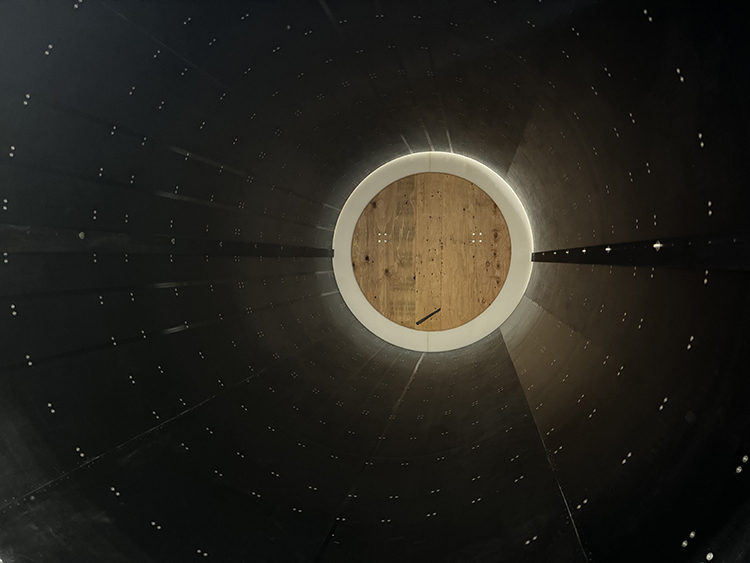
On February 22, 2024, the BTST was delivered to Composite Manufacturing and Simulation Center (CMSC). Above, the tube that will be inserted in the heart of the CMS waits to be unpacked from its massive cargo container. Below wearing a black jacket, Ben Denos, Lead Research Engineer, instructs the shipping team on how best to unpack this precious cargo. Photos by Cheryl Pierce.
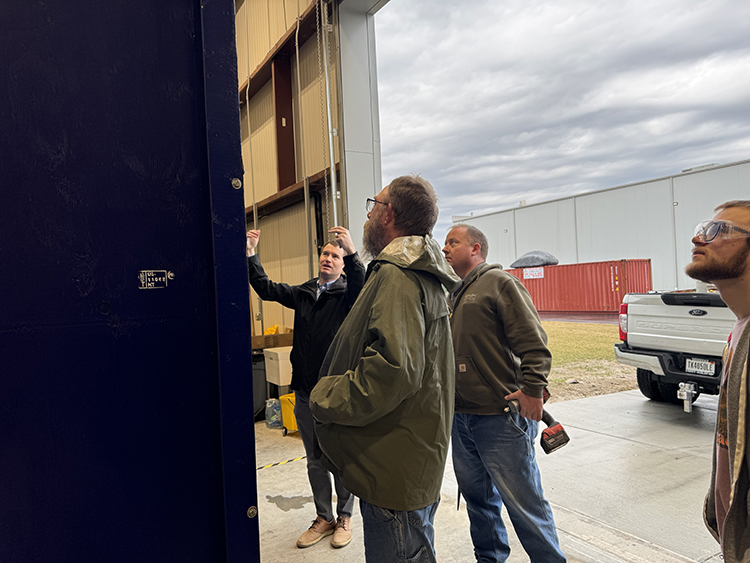
According to Fermilab, the upgrade to CMS will significantly improve the capabilities of the detector and enable scientists to explore uncharted territory on the particle physics landscape. With help from Boilermakers, this funding will help advance the world toward the next giant leaps in physics.
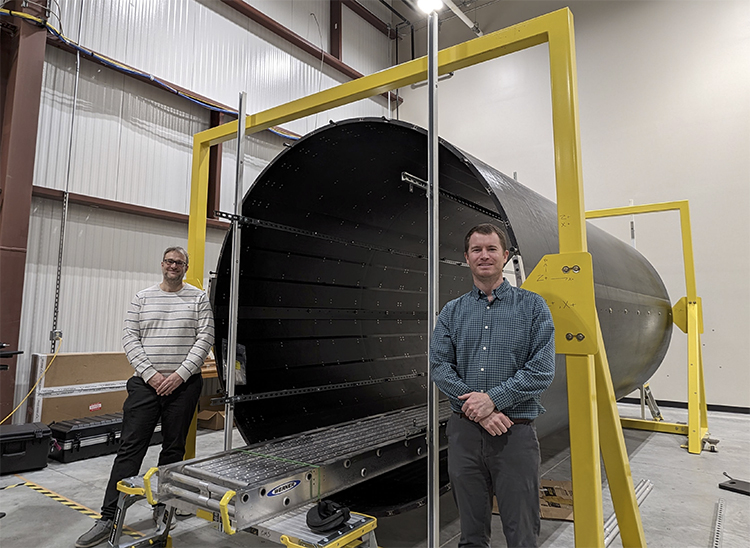
This level of fabrication requires an extremely large autoclave so Jung’s team teamed up and collaborated with Rock West Composites. Pictured above is Andreas Jung (left) and Ben Denos visibly relieved that the critically needed structure got delivered to Purdue. Below, the Rock West Composites, Inc. team stand in front of the tube Back Row Left to Right: Aaron Ramos-Crespo, David Marquez, Salvador Solorio, Arturo Ojeda-Gomez, Jason Retford, Wayne Taylor, Andrew Walker, Jose San Vicente, Xochitl Edith Yanez-Garcia, Julian Valdez, Johnny Marks (technical lead), Juan Nuno, Jim Gormican (CEO), Ethan Gormican, Nallely Petris, Victor Montoya. Front Row Left to Right: David Carrillo, Xavier Guerrero, Alfredo Zavala, Heriberto Garcia, Goyo Velazco, Liliana Diaz Orenday. Not Pictured: Steve Walker, Lee Bridges, Elijah Bates. Photos provided by Andreas Jung.
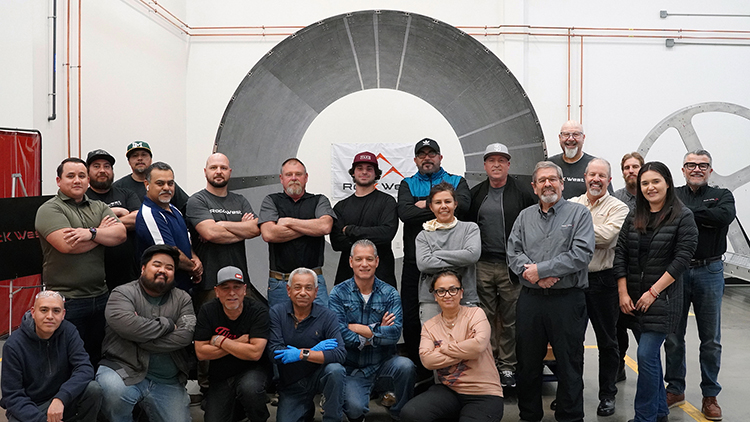
About the Department of Physics and Astronomy at Purdue University
Purdue’s Department of Physics and Astronomy has a rich and long history dating back to 1904. Our faculty and students are exploring nature at all length scales, from the subatomic to the macroscopic and everything in between. With an excellent and diverse community of faculty, postdocs and students who are pushing new scientific frontiers, we offer a dynamic learning environment, an inclusive research community and an engaging network of scholars.
Physics and Astronomy is one of the seven departments within the Purdue University College of Science. World-class research is performed in astrophysics, atomic and molecular optics, accelerator mass spectrometry, biophysics, condensed matter physics, quantum information science, and particle and nuclear physics. Our state-of-the-art facilities are in the Physics Building, but our researchers also engage in interdisciplinary work at Discovery Park District at Purdue, particularly the Birck Nanotechnology Center and the Bindley Bioscience Center. We also participate in global research including at the Large Hadron Collider at CERN, many national laboratories (such as Argonne National Laboratory, Brookhaven National Laboratory, Fermilab, Oak Ridge National Laboratory, the Stanford Linear Accelerator, etc.), the James Webb Space Telescope, and several observatories around the world.
About Purdue University
Purdue University is a public research institution demonstrating excellence at scale. Ranked among top 10 public universities and with two colleges in the top four in the United States, Purdue discovers and disseminates knowledge with a quality and at a scale second to none. More than 105,000 students study at Purdue across modalities and locations, including nearly 50,000 in person on the West Lafayette campus. Committed to affordability and accessibility, Purdue’s main campus has frozen tuition 13 years in a row. See how Purdue never stops in the persistent pursuit of the next giant leap — including its first comprehensive urban campus in Indianapolis, the new Mitchell E. Daniels, Jr. School of Business, and Purdue Computes — at https://www.purdue.edu/president/strategic-initiatives.
Contributors:
Andreas Jung, associate professor in the Department of Physics and Astronomy at Purdue University
Miaoyuan Liu, assistant professor in the Department of Physics and Astronomy at Purdue University
Written by Cheryl Pierce, Communications Specialist